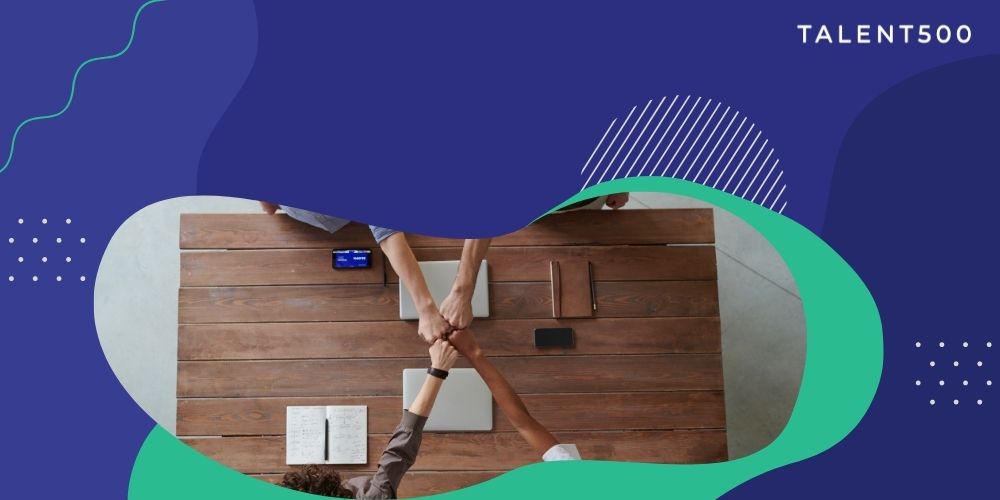Hiring for diversity was once just a practice meant to appease compliance norms, but that isn’t the case anymore. In most organization today, there is simply no room for discrimination, and hiring strategies focus on the value on offer. In fact, data states that organizations that hire without any kind of bias have greater employee satisfaction numbers. Additionally, diverse companies are 33% more likely to outperform their competition and their teams are 2x better at making decisions.
The sheer fact that diverse companies outperform their competitors speaks to the validity of it as a hiring strategy. That aside, it is simply the right thing to do. Moreover, diversification leads to trade facilitation and a chance to explore new market opportunities. Beyond revenue, it also provides increased social cohesion, a welcome benefit that has a major say in public perception. Naturally, every company looking to exist and thrive in a modern landscape must have policies that promote diversity.
Here, setting realistic goals is important and they must align with long term objectives, as is standard for any business practice. Inclusive environments are thriving and the business case for diversity & inclusion (D&I) is stronger than ever, as per reports. If nothing else, it helps steer clear of the steep penalties that accompany a lack of such policies. So, how do companies go about hiring for diversity? Read on for an overview of a few proven strategies.
Diversify against a single demographic workforce
Literature review on D&I provides compelling evidence that diversity unlocks latent innovation, a key driver of market growth. Moreover, the millennial employee is a huge advocate for diversity in the workplace. Data shows that these individuals actively seek out employers with a history of equality among the genders. Women millennials are particularly invested in this regard, looking to see a change in the hiring policies.
Diversifying against a single demographic workforce also promotes goodwill in the market. It creates awareness and has the potential to generate a more diverse clientele. An efficient way to put this into action is to do a thorough audit of the job ad. Scan the language and look for tones that could either alienate or focus on any given demographic. Very often it is the simplest issue of communication that could be the cause of such disparity.
Get rid of unconscious bias with artificial intelligence (AI)
Bias is ubiquitous and universal; it is difficult to avoid. At certain times the blame for discrimination in hiring is placed on unconscious bias, which everyone is susceptible to. Artificial intelligence (AI) holds great promise for eliminating this bias in the hiring process due to two primary reasons:
- It remains objective while assessing an entire pipeline of candidates, often faster than humans.
- It combines data points using the algorithms to predict the best candidates all the while processing information at a massive scale.
Different software that leverages AI can also eliminate bias in a job advertisement by conducting sentiment analysis. This identifies exclusionary language, while also suggesting alternatives better suited to a more diverse talent pool.
Use blind hiring tools to assess for value
Studies show that a majority (85%-97%) of professionals rely on the mental synthesis of intuition while processing applicants. This simple act of assessment has the potential to develop a bias. Blind hiring solves this issue, as there are no identifiable characteristics shared during the process. Naturally, for a diverse hiring protocol, this approach was widely adopted and rightfully so. Among its main advantages is that it can eliminate gender discrimination from the process of hiring.
This is particularly important as data points out that one in five women are discriminated against during recruitment. When compared to their male counterparts, only 5% reported similar issues. Additionally, blind hiring solutions can eliminate performance assessment errors that may arise when factoring in past experience. This is a common issue that can be a roadblock to establishing diversity.
In general, diverse teams are more efficient and better equipped for the modern world. Organizations must adapt to the new landscape and technology-backed solutions are the way forward. The employee retention improvements alone make it worth the effort, and with Talent500, the hiring process is a lot more efficient.
Our services help companies prioritize their hiring agendas and extract maximum value. Leverage the best talent across a range of developer communities to achieve your D&I goals while attracting the best in the talent pool. To know more, schedule a consultation and explore solutions that can help you build and scale global workforces that deliver.






Add comment